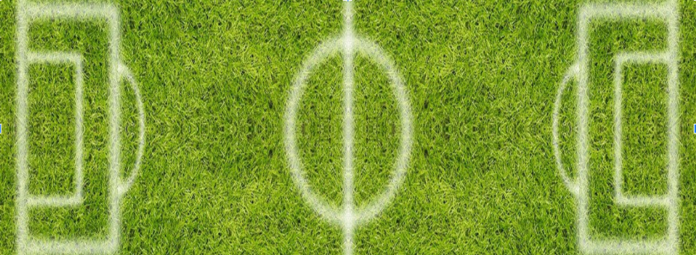Introduction
Artificial turf has transformed sports fields, offering benefits that natural grass cannot consistently provide. Its increasing popularity in football, soccer, and indoor sports stems from its durability, performance enhancements, and safety features. It’s also cost-effective and remains green year-round with minimal maintenance.
Durability of Artificial Turf
Sports fields face strenuous use, including impacts from cleats, harsh weather, and constant play. Artificial turf resists these challenges, providing unmatched durability. Unlike natural grass, which wears down and becomes uneven, artificial turf maintains its condition, ensuring consistent playability and lowering maintenance costs. This reliability is achieved through advanced materials and construction.
Performance Advantages
Artificial turf improves gameplay by providing consistent ball roll and bounce, essential in sports like soccer and football. Its surface remains uniform, allowing athletes to confidently execute precise movements. Moreover, indoor sports turf offers athletes a controlled training environment unaffected by external weather conditions.
Safety Considerations
Player safety is critical in sports. Artificial turf enhances safety through design. It provides reliable traction, even when wet, reducing the risk of slips and injuries. It incorporates shock-absorbing properties that lessen impact injuries, offering a cushioned surface for falls during intense gameplay.
Applications in Football
Artificial turf is ideal for football fields because it can withstand heavy use, maintaining a pristine surface. Football players benefit from consistent traction, which facilitates explosive movements. Minimal maintenance requirements provide a reliable playing surface for all activities.
See also: Having Chickpeas For A Healthy Life Has Many Benefits
Applications in Soccer
Artificial turf provides soccer players with a consistent playing surface. Designed to replicate natural grass, it ensures predictable ball roll and bounce. Games played on artificial turf are uninterrupted by weather conditions. Its long-term durability makes it a popular choice among professional and amateur teams.
Allergy Considerations
Artificial turf eliminates allergy concerns for players and spectators. Unlike natural grass, it does not produce pollen, making it ideal for allergy sufferers who frequent sports fields and recreational areas.
Sports Turf: The Clear Choice
Artificial turf offers significant advantages over natural grass, improving durability, performance, and safety. Artificial turf football fields and indoor sports turf provide reliable surfaces for consistent play. As technology advances, artificial turf will shape sports field design, improving playing conditions and ensuring long-lasting athletic opportunities.
Historical Context
The first major installation of artificial turf was in 1966 at the Houston Astrodome. ChemGrass, later known as AstroTurf, was selected for its ability to withstand heavy traffic and provide a consistent playing surface. Throughout the 1970s and 1980s, this surface was widely adopted, but by the late 1980s, it faced criticism regarding potential player injuries.
Second Generation Surfaces
The second generation of synthetic turf was introduced in 1976. These surfaces featured a shock-absorbing pad beneath longer carpet fibers, filled with silica sand. While not as popular as the first generation in the United States, they paved the way for modern third-generation systems.
Components of Modern Synthetic Turf Systems
Third-generation systems consist of a stable base made of gravel, asphalt, or concrete. This base is designed to support the turf layer which includes fibers made from polyethylene, nylon, or polypropylene. The infill material between the fibers often consists of crumb rubber or a mix of crumb rubber and silica sand, providing cushioning.
- Base Construction: Typically made of gravel, asphalt, or concrete.
- Shock-Absorbing Pad: Often installed for additional cushioning.
- Turf Fibers: Made from polyethylene, nylon, or polypropylene.
- Infill: Usually crumb rubber or a mix of crumb rubber and silica sand.
Maintenance of Artificial Turf
A common misconception is that artificial turf is maintenance-free. Manufacturers outline and require regular maintenance to uphold warranties.
Standard Maintenance
Regular upkeep is important for artificial turf, including routine sweeping and infill management. Brooming with nylon brushes and raking with spring tooth tines helps raise matted-down fibers and loosen the infill. Periodic replacement of lost infill ensures an adequate level.
The accumulation of paint can impact surface hardness; therefore, paint removal is suggested every four applications. Regular removal of debris prevents contamination and maintains surface quality.
Player Health and Safety
Playing surfaces play a crucial role in player safety, prompting increased focus on injury prevention. Key aspects include surface type and upkeep.
Athlete-Turf Interaction
The interaction between synthetic turf and athletes continues to raise concerns about injury rates. Prior research indicates that playing surfaces may increase the risk of lower extremity injuries. Biomechanical studies show limited capacity for synthetic surfaces to release cleats under high stress compared to natural turf, which has led to ongoing discussions about injury risk.
Nonmusculoskeletal Injuries and Other Health Concerns
In addition to lower extremity injuries, health concerns related to synthetic turf include the risk of head injuries, the potential for infections, surface temperature, and carcinogenic risks.
Head Injuries
While most concussions result from player collisions, surface impacts can also cause head injuries. Studies suggest that harder surfaces may correlate with increased head injury risks.
Surface Temperature
Synthetic turf can reach high temperatures, requiring consideration of potential risk. Research indicates that proper irrigation techniques can reduce surface temperatures. However, continued awareness remains necessary to prevent overheating.
Carcinogenic Risk
The potential health effects of materials in synthetic turf continue to be researched. Several studies have investigated the carcinogenic risk associated with rubber infill, finding exposure levels within typical community risk ranges. Further study is needed, but existing research suggests minimal elevated health risks.
Skin Infections
Media reports have raised concerns about skin infections in players exposed to synthetic turf, particularly due to abrasions. While synthetic turf may contribute to abrasions, studies suggest that proper hygiene practices and facility sanitation can mitigate infection risks.
The effectiveness of artificial turf in sports and recreational settings depends on its proper maintenance. If you are looking for artificial turf, check out jcturf to bring your project to life.

